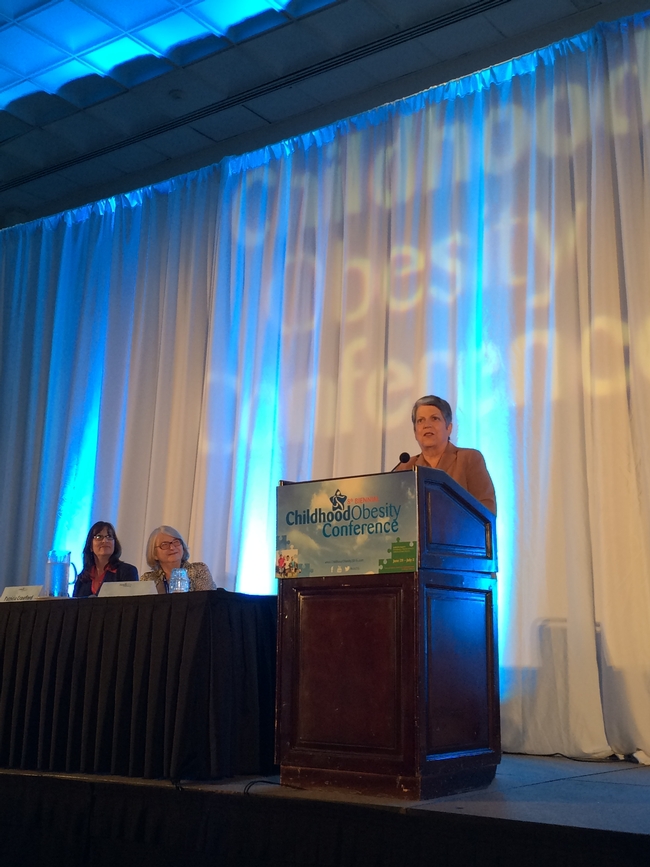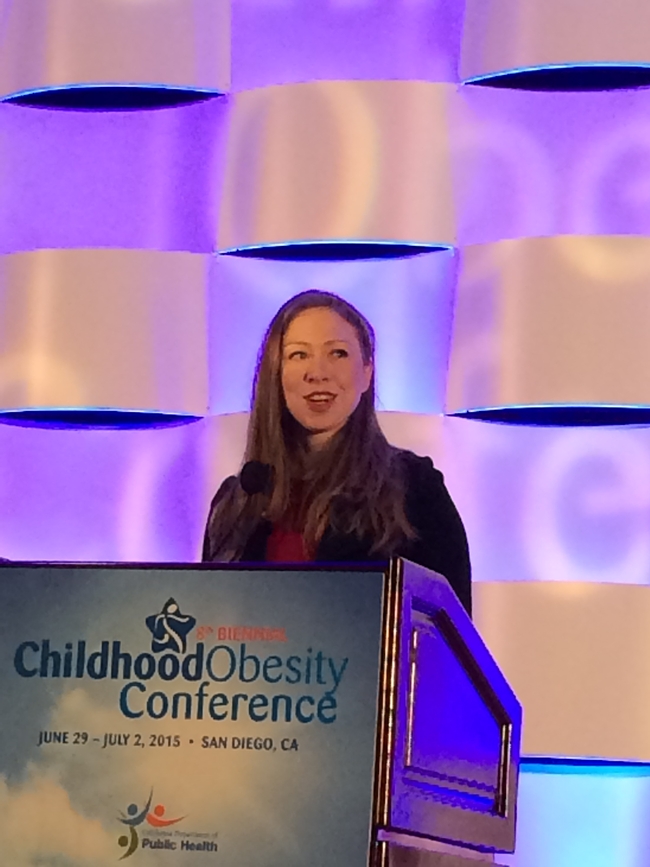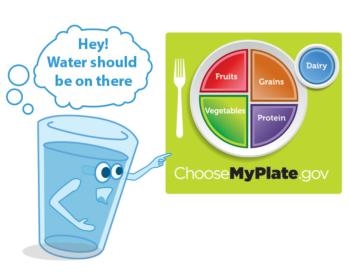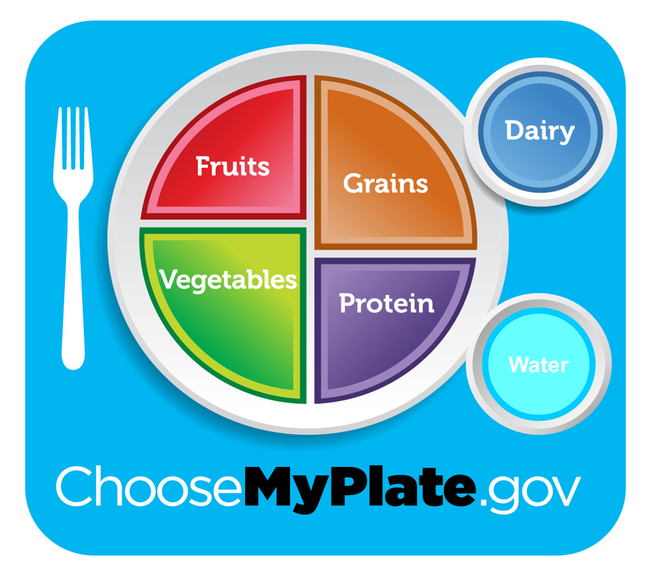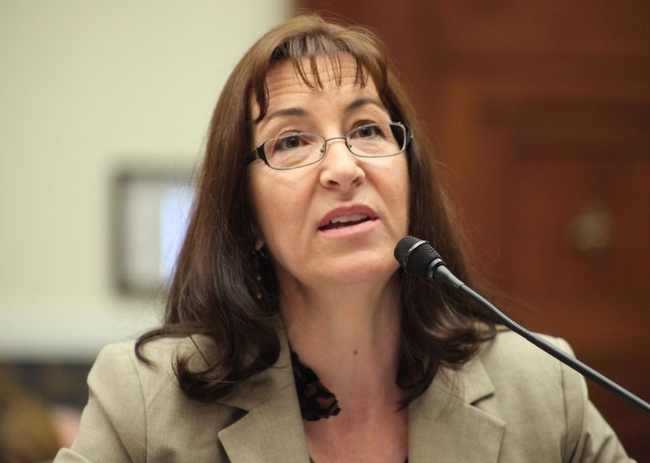Posts Tagged: obesity
Tackling childhood obesity: A systems change approach
On paper, the charge was clear: launch a statewide effort to integrate the nutrition education programs of USDA SNAP-Ed funded partners. Address childhood obesity and food insecurity holistically, yet specifically. Do this through policy, systems and environmental approaches that will leverage community participation and resources in order to create sustainability at the local level, and do it as funding is declining in SNAP-Ed programs.
But what would this integrated effort actually look like in practice? How could a single effort weave together the many agencies, actors, and systems that influence a child's earliest years, a family's food selection, and school and community activities? How could the people around a table, some meeting for the first time, coalesce around a shared vision, let alone mutually agreed strategies?
A problem as multifaceted as childhood obesity requires a similarly complex public health approach to meet the challenge. It is with this charge that over the past four years UC CalFresh has been working across California on nutrition education and obesity prevention with the California Department of Social Services, the California Department of Public Health, the California Department of Aging, and Catholic Charities to redefine Supplemental Nutrition Assistance Program-Education (SNAP-Ed, which is funded by the USDA Food and Nutrition Service).
The SNAP-Ed mission in California is to inspire and empower underserved Californians to improve their health and the health of their communities by promoting awareness, education, and community change through diverse partnerships, resulting in healthy eating and active living.
SNAP-Ed work is executed through county-led integrated workplans which now embody policy, systems and environmental (PSE) change in the body of work previously seen as a direct education program in schools and communities. Adding PSE activities to SNAP-Ed work acknowledges that a systems change approach that comprehensively addresses nutritional health where people live, learn, work, shop and play most effectively assures that children and their families will benefit from SNAP-Ed educational efforts.
Technical assistance through education on food and food resource management coupled with assisting community members in making changes to their environment is a viable method of creating sustainable change. These types of comprehensive changes in schools and communities have been cited by a recent Robert Wood Johnson report to help children grow up at a healthy weight.
- Tackling obstacles such as access to affordable fresh fruit and vegetables, safe areas to recreate, safe routes to school, and programs/curricula that encourage physical activity are important aspects of initiating long lasting community health and lifestyle changes.
- Teaming with the Department of Transportation or environmental programs such as Resilient Schools can fuse nutritional work with those working in other areas that contribute to and foster a safe, healthy community.
- Wellness policies in schools that encourage good nutrition and physical activity institutionalize healthy lifestyle choices.
- Programs like the Smarter Lunchroom Movement help schools and students make the healthy choice in food and beverages the easy choice.
- Environmental supports such as murals in the lunchroom or on school/community grounds visually reinforce key messages. On the playground, stencils depicting fruits and vegetables with key messages help motivate student's movement and play while reinforcing lessons learned in the classroom.
- Garden-based learning facilitates student and community members' exploration of low-cost methods to add fresh fruits and vegetables to their daily meal plan. Research shows that nutrition and gardening experiences, linked to academic standards for a specific age group, can increase vegetable and fruit consumption and physical activity.
Now, let's explore how these changes in the type of work executed through SNAP-Ed is poising California communities to tackle childhood obesity.
There is general agreement through research that the first years of children's lives can determine the rest of their development. Across ideological divides, there is consensus that investing early makes sense — it helps children develop healthy habits that can last a lifetime — creating a high return on the investment of public dollars.
As described, SNAP-Ed funded and non-funded partners in communities are tackling childhood obesity and food insecurity on multiple fronts. It has been initiated with five broad-based levers for change:
- Offering evidence-based direct nutrition education curricula and technical assistance
- Developing state and local partnerships
- Using data to inform strategies
- Building commitment among stakeholders
- Tackling policy and practice change
However, in the end, support in counties from SNAP-Ed funded partners requires community leadership and long term ownership to succeed. Each community is armed with essential knowledge about local context to make sense of these levers and to pursue emergent opportunities.
At the state and local level, the development and implementation of integrated workplans with community members input is a blueprint charting each counties course.
At the state level, the past four years of developing SNAP-Ed integrated workplans created several lessons in systems change evolution:
Listen and learn
The more we listen and support community members, bringing their ideas to the forefront of our work, the more sustainable our efforts will be.
Connect the dots and engage
Fragmentation and silos create a diverse but disconnected sector. Communicate and connect as much as possible.
Create mission and values statements that unify - then operate transparently
As you get to know the community members and organizations that you are working with— together create your mission and values statement and make that your solidifying “call to arms” — then work transparently to fulfill your mutual objectives.
Embrace tensions
Different settings, standards, and social norms create tension — successful systems change efforts face, rather than circumvent, these tensions…be respectful and “lean in”.
Foster a long term approach/celebrate short term “wins”
As we review the many factors that lead to childhood obesity and food insecurity, use long term systems change strategies, foster sustained commitment, and celebrate successes, no matter how small.
Be adaptable but purposeful
Reflect on how different organizations work and understand that your perspective may be a result of your vantage point. Try to be in another organization's or person's shoes, recognize their impediments, then work together with this in mind. Good strategies are shaped by reflection and steered with an understanding that there may be a need for course correction.
Keep a unified resolve
A recent Robert Wood Johnson Foundation report concluded that between 2005 and 2010 California saw “a modest but significant decline” in childhood obesity of 1.1 percent in grades 5, 7 and 9. In addition, a 2013 Centers for Disease Control and Prevention report indicated progress in the health of California preschoolers enrolled in federal health and nutrition programs. The report cited that “obesity rates among 2-4 yr olds from low income families dropped 2.9 percent from 17.7 percent in 2008 to 16.8 percent in 2011.” This data speaks to the significance of a comprehensive approach in preventing childhood obesity. Further, it emphasizes the importance of the teamwork provided by a network of state and local agencies, acting with community members, to make a difference in the lives of children.
California data reported by the 2016 Robert Wood Johnson Foundation:
- Since 2004, schools have removed soda and other sugar sweetened beverages from premises.
- Since 2007, schools have limited the calories, fat saturated, fat and sugar in snacks sold on their premises.
- Since 2012, school districts have been required to make free, fresh drinking water available in school food service areas.
- Since 2006, $40 million has been committed in annual dedicated state funding for elementary school physical education.
Twenty questions that can predict obesity
By asking 20 simple questions about family eating habits, health professionals can help predict the likelihood that young children will become overweight or obese in the future, according to research by UC Agriculture and Natural Resources (UC ANR) scientists.
This knowledge allows professionals to quickly identify where interventions are needed to change behaviors before the children end up with chronic diseases caused by an unhealthy trajectory of weight gain.
The project was a collaborative effort involving the nutrition science laboratory of Marilyn Townsend, UC Cooperative Extension specialist based at UC Davis, and UC Cooperative Extension's Expanded Food and Nutrition Education Program educators. Funding was provided by grants from USDA and UC ANR.
The 20 questions came from a much longer Healthy Kids survey. In creating the survey, the scientists focused on young children in low-income families, which are disproportionately affected by the obesity crisis. The USDA is troubled by statistics that show that, over the last three decades, the rate of overweight and obesity has risen consistently.
Organizations that work with low-income families are eager to determine which families need help to modify their at-home eating practices to ensure a healthier outcome for the children. The wording of the initial versions of survey questions were identified by poring over dozens of peer-reviewed published research reports. Townsend and her staff then conducted numerous interviews with parents to reword questions so that those with literacy issues could understand the meaning as researchers intended.
“Parents have control over the children's environments. They buy the food and serve it. We looked at what parents are doing that might be impacting obesity,” Townsend said.
The researchers identified 23 dietary decisions that parents were making that seemed to contribute to their children's weight gain. The researchers then wrote 48 questions to gauge the 23 behaviors.
Developing an effective questionnaire involved extensive research and testing. Ultimately, the most effective format included pictures that looked like family snapshots, not stock photos, simple language and multiple choice questions. The survey was made available online to agencies that work with low-income families. It works, but it's long.
Streamlining the survey became the Townsend lab's next order of business.
Working with UCCE nutrition, family and consumer sciences advisors, the team recruited 170 children between 2 and 5 years old and their parents. They measured the children's height and weight and took blood samples at three times during the four-year study. The parents also completed the 48-question survey.
“By tracking height and weight, and comparing the changes over time, we got a clear picture which children were on an excessive weight gain trajectory,” Townsend said. “With the blood samples, we were able to look for biomarkers that are indicative of inflammation, which are related to choices in the family environment.”
Using sophisticated statistical analysis, the scientists were able to identify the 20 questions that were most indicative of unhealthful weight gain and higher incidence of biomarkers that indicated low grade inflammation in the children's blood.
|
The 20 questions are:
|
Experts combine research with policy to reduce childhood obesity
It was the first time a UC president has taken part in the long-running and nationally recognized gathering, noted the director of UC Agriculture and Natural Resources' Nutrition Policy Institute (NPI), Lorrene Ritchie.
“I think it demonstrates her commitment to the Global Food Initiative and the work we do at UC ANR,” Ritchie said.
During her remarks, Napolitano said it was fitting for her to speak at the conference as it coincided with the one-year anniversary of the Global Food Initiative, a sweeping effort involving all UC campuses and UC ANR that was inspired by many of the same concerns addressed by conference participants.
“As we meet here in San Diego today, a billion people — most but not all of them in the developing world — suffer from chronic hunger or serious micronutrient deficiencies,” Napolitano said. “Another half billion — primarily in the industrialized nations of the world, like the United States — suffer from obesity.”
Since the biennial conference's inception, Patricia Crawford, UC ANR Cooperative Extension nutrition specialist, and other members of NPI have been involved in its planning. Crawford announced she is “passing the baton” to Ritchie to guide the conference moving forward.
More than 1,700 nutritionists and other experts on children's health attended the San Diego gathering June 29 – July 2. In addition to the NPI, the conference was hosted by the California Department of Public Health, California Department of Education, the California Endowment and Kaiser Permanente.
NPI hosted a preconference workshop on June 29 to bridge the gap between research and policy regarding the federal nutrition assistance programs and the Dietary Guidelines, which reach more Americans than any other nutrition policy.
“The preconference session provided a rare opportunity for policymakers and administrators, nutrition researchers, advocates, and funders to sit together to identify today's key policy issues and propose research to inform future policy debates and developments,” said Kenneth Hecht, NPI director of policy. “Participants also focused on another extremely important question: How to improve communications in both directions between researchers and policymakers.”
At the opening plenary session, Chelsea Clinton, vice-chair of The Clinton Foundation, talked about projects her family's foundation work to improve children's health and literacy.
“Childhood obesity is a national security challenge. The Joint Chiefs of Staff said that very clearly in 2013,” Clinton said. “In New York City, where I live, the New York City Fire Department and Police Department have said they are worried they won't be able recruit enough people to fill their ranks if obesity rates continue.”
To help address the problem, the Clinton Foundation along with the American Heart Association established the Alliance for a Healthier Generation 10 years ago. Because of the program, nearly 300 California schools have made changes significantly reducing overweight among children.
“Grateful to all @ObesityConffor for a great morning talking about @HealthierGenand for everything you do to help children be healthy!#COC15,” Clinton tweeted after her presentation.
During a workshop session, NPI's Ritchie and other panelists discussed the importance of policies and standards for healthy alternatives to sugar-sweetened beverages for children in childcare settings. Crawford and other panelists presented data on childhood obesity trends and racial/ethnic disparities in California and discussed the health and financial consequences. They also addressed the cost-effectiveness of national and state excise taxes on sugar-sweetened beverages and labels to inform consumers of the health risks of consuming sugary drinks.
Hecht also moderated a panel on local and national initiatives that are linking farm fresh produce to food bank recipients. NPI researcher Elizabeth Campbell, who participated in the discussion with a local farmer, a food bank employee and a public health anti-hunger advocate, said food banks should have policies to guide the nutritional quality of their inventory.
During the closing plenary, First Lady Michelle Obama sent video greetings to the Childhood Obesity Conference attendees to praise them for their work and encourage them to continue to fight to protect children's health.
PowerPoint presentations from the conference are available online. Photos and postconference information can be seen on Facebook and Twitter and with the hashtag #COC15.
NPI study: Law improves beverage environment in California childcare
In 2008 and 2012, NPI researchers conducted a survey of more than 400 randomly selected California licensed childcare facilities to look at beverages in childcare before and after California's Healthy Beverages in Child Care Act (AB 2084) took effect in January 2012. Under this law, only fat-free or low-fat (1 percent) unsweetened, plain milk for children two years of age or older is allowed, and no more than one serving per day of 100 percent juice. No sugary drinks are allowed at all. Also, drinking water must be readily available throughout the day, including at all meal, snack and play times.
NPI Director Lorrene Ritchie presented NPI's research findings on June 30 at the 8th Biennial Childhood Obesity Conference in San Diego. The NPI study found that the policy was effective at improving the beverage environment in California childcare. Provision of whole milk dropped from nearly 30 percent of childcare facilities in 2008 to less than 9 percent of facilities 2012. The provision of other beverages also improved. In 2008, 27 percent of facilities offered juice more than once a day, compared to just 20 percent in 2012. Facilities offering any sugar-sweetened beverages dropped from 7.6 percent in 2008 to 6.9 percent in 2012.
“We know the beverages children consume can put a child at risk for overweight and obesity,” said Ritchie. “The good news is that the healthy beverage standards did improve the beverage environment in California childcare. This law impacts potentially a million young children in our state.”
Despite the improved beverage environment, NPI found that only 60 percent of childcare facilities were aware of the law, and only 23 percent were in full compliance with all provisions.
“We need to do more to improve the beverage environment,” said Ritchie. “Based on our findings, we recommend that all childcare providers have access to nutrition training so that more understand and are able to comply with California's childcare beverage standards.”
The NPI study also looked at the effects of serving water at the table with meals and snacks. While this was not a provision of the California law, it is a best practice for teaching children to reach for water first for thirst. Putting water on the table did not have an impact on children's intake of milk and other foods, which was a common concern of providers caring for young children. However, the study found the law didn't make much of a difference in increasing children's water intake either.
“Simply serving water at the table with meals and snacks is not likely to interfere with intake of other healthy things,” said Ritchie. “But we don't know what would happen if water were provided in such a way as to substantively increase water intake.”
The University of California Global Food Initiative aims to put the world on a path to sustainably and nutritiously feed itself. By building on existing efforts and creating new collaborations among UC's 10 campuses, affiliated national laboratories and the Division of Agriculture and Natural Resources, the initiative will develop and export solutions for food security, health and sustainability throughout California, the United States and the world.
Scientists ask USDA to add water to MyPlate
Ritchie has joined with dozens of nutrition and health professionals around the country to ask that the USDA put water onto MyPlate.
“We don't have all the answers to overcoming obesity, but the research on sugar-sweetened beverages is very clear,” Ritchie said. “When you drink beverages like soda, sports drinks or punch, the sugar gets absorbed very rapidly and the body doesn't recognize the calories. The result is excess calories and weight gain.”
The USDA introduced MyPlate in 2011 to reflect the message of its Dietary Guidelines for Americans, 2010. Federal law requires that the guidelines be reviewed, updated and published every five years.
“USDA officials say that, in order to change MyPlate, there must be more information in the dietary guidelines about water,” Ritchie said. “We are working through the public comment process to ask the advisory board to promote water as the beverage of choice.”
The ultimate goal – a new water icon on MyPlate – is important because of its high visibility. MyPlate is found on elementary school classroom walls and cereal boxes; at community gardens and the grocery store produce aisle.
In preparing for a visit with USDA officials at their Washington, D.C., headquarters, Christina Hecht, UC Nutrition Policy Institute coordinator, asked UC Cooperative Extension specialists in California for input on MyPlate. Their enthusiasm was unanimous.
“They see MyPlate as the face of the dietary guidelines and are very supportive of using the image as a teaching tool,” Hecht said. “They also supported the idea of adding a symbol for water.”
She shared the California educators' thoughts on MyPlate with her USDA contacts. “When they get a story from the field, it really matters to them,” Hecht said.
Ritchie and her colleagues around the country submitted a “Best of Science” letter to the Dietary Guidelines Advisory Committee imploring them to strengthen the language for drinking water.
“Current research indicates that children, in particular, are subject to ‘voluntary dehydration' from low intake of plain water,” the letter says. “Between 2005 and 2010, more than a quarter of children aged 4 to 13 years old in the U.S. did not have a drink of plain water on two consecutive days.”
Instead, they are drinking sugary beverages. National surveys in the early 2000s found that, on any given day, 84 percent of 2- to 5-year-old children drank sugar-sweetened beverages like sodas, sports drinks and fruit punch. The calories amounted to 11 percent of the children's total energy intake.
- Sugar-sweetened beverages – including sodas, juice drinks, pre-sweetened tea and coffee drinks, and fortified or energy drinks – are among the top sources of calories for children and adolescents.
- Between the late 1960s and early 2000s the consumption of sugar-sweetened beverages doubled.
- While the American Heart Association recommends no more than 6 teaspoons of added sugars per day for women and 9 teaspoons per day for men, the average U.S. consumption is 17 teaspoons per day.
- Low-income populations have higher intakes of sugar-sweetened beveragesand Latino children drink more of them than white children.
- Cardiovascular disease, present in more than one-third of American adults, is now understood to be exacerbated by the inflammatory effects of excess sugar consumption.
- Excess sugar consumption is a risk factor for non-alcoholic fatty liver disease, a precursor to diabetes.
Best of Science Letter







